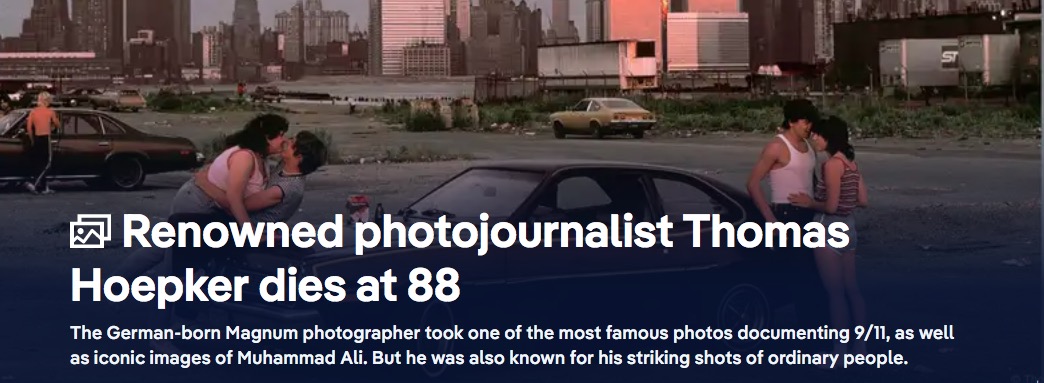Anti-American photojournalist’s writings exposed.
In yesterday’s Wall Street Journal, art critic Richard B. Woodward writes about how famous Magnum photographer Thomas Hoepker fabricated a story to suit his anti-American mind set. No surprise that German Hoepker proudly boasts of making his home on Manhattan’s upper east side.
The picture in question shows five people in Brooklyn chatting on the waterfront on September 11, 2001, while smoke billows from the World Trade Centers behind them.
Specifically, and scandalously, Hoepker wrote:
“It’s possible they lost people and cared, but they were not stirred by it.”
And here’s more of his tripe:
“Four and a half years later, when I was going through my archive to assemble a retrospective exhibition of my work from more than 50 years, the color slide from Brooklyn suddenly seemed to jump at me. Now, distanced from the actual event, the picture seemed strange and surreal. It asked questions but provided no answers. How could disaster descend on such a beautiful day? How could this group of cool-looking young people sit there so relaxed and seemingly untouched by the mother of all catastrophes which unfolded in the background? Was this the callousness of a generation, which had seen too much CNN and too many horror movies?”
Needless to add, Hoepker’s fraud was aided, abetted and amplifed by none other than, yes, you guessed it, The New York Times, whose Frank Rich called the image “shocking”. You can imagine how much research went into that opinion. Any publication with ethics policies would fire Rich for his drivel; I imagine a promotion is probably in store for him for getting circulation and anti-American feelings up.
Hoepker’s fraud was exposed when none other than one of the people portrayed in the picture wrote to Slate magazine stating:
“Had Hoepker walked fifty feet over to introduce himself he would have discovered a bunch of New Yorkers in the middle of an animated discussion about what had just happened.”
Subsequently, the woman in the picture – a professional photographer, no less – also contacted Slate with a poignant and moving rebuttal.
The Wall Street Journal writes succinctly that “In effect, (Hoepker) has Photoshopped (the image) in his mind so that it now belongs neatly in a more contemporary storyline of this nation’s culpability for world unease”.
Well written.
While I disagree with Woodward’s earlier statement that digital trickery has “…not eroded the truth value of photographs…” – I have shown many examples of Photoshop fraud in this journal which should make everyone sceptical – it is heartening to see people taking a stand against America’s detractors, not least against those who would, in the same breath, proffer inane apologia for all that was good and great about all those moral German industrialists during WWII. You can substitute ‘German industrialists’ with ‘terrorists’ and ‘mass murderers’, and it works just as well.
Update 9/102014: Hoepker’s cynical exploitation of tragedy for personal gain, his self-serving response notwithstanding, is further addressed here.
Update July 12, 2024:
Mercifully Hoepker has finally done the decent thing and passed on to his German heaven. A first for him, doubtless.

A bad man passes.
His crass profit making from one of America’s greatest tragedies confirms that no German should ever lecture Americans on what doing the right thing means. Good riddance.